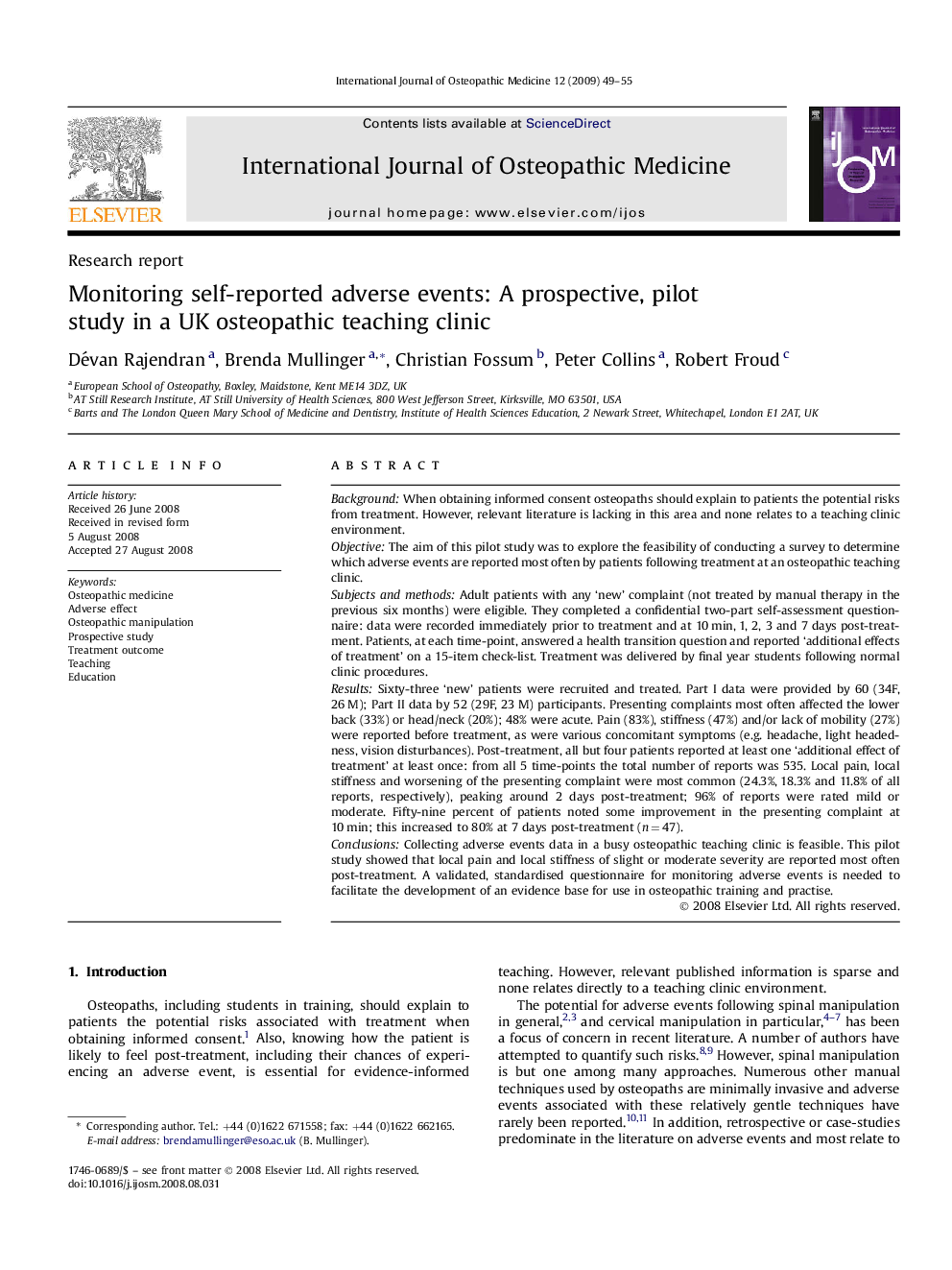| کد مقاله | کد نشریه | سال انتشار | مقاله انگلیسی | نسخه تمام متن |
|---|---|---|---|---|
| 2618894 | 1563016 | 2009 | 7 صفحه PDF | دانلود رایگان |

BackgroundWhen obtaining informed consent osteopaths should explain to patients the potential risks from treatment. However, relevant literature is lacking in this area and none relates to a teaching clinic environment.ObjectiveThe aim of this pilot study was to explore the feasibility of conducting a survey to determine which adverse events are reported most often by patients following treatment at an osteopathic teaching clinic.Subjects and methodsAdult patients with any ‘new’ complaint (not treated by manual therapy in the previous six months) were eligible. They completed a confidential two-part self-assessment questionnaire: data were recorded immediately prior to treatment and at 10 min, 1, 2, 3 and 7 days post-treatment. Patients, at each time-point, answered a health transition question and reported ‘additional effects of treatment’ on a 15-item check-list. Treatment was delivered by final year students following normal clinic procedures.ResultsSixty-three ‘new’ patients were recruited and treated. Part I data were provided by 60 (34F, 26 M); Part II data by 52 (29F, 23 M) participants. Presenting complaints most often affected the lower back (33%) or head/neck (20%); 48% were acute. Pain (83%), stiffness (47%) and/or lack of mobility (27%) were reported before treatment, as were various concomitant symptoms (e.g. headache, light headedness, vision disturbances). Post-treatment, all but four patients reported at least one ‘additional effect of treatment’ at least once: from all 5 time-points the total number of reports was 535. Local pain, local stiffness and worsening of the presenting complaint were most common (24.3%, 18.3% and 11.8% of all reports, respectively), peaking around 2 days post-treatment; 96% of reports were rated mild or moderate. Fifty-nine percent of patients noted some improvement in the presenting complaint at 10 min; this increased to 80% at 7 days post-treatment (n = 47).ConclusionsCollecting adverse events data in a busy osteopathic teaching clinic is feasible. This pilot study showed that local pain and local stiffness of slight or moderate severity are reported most often post-treatment. A validated, standardised questionnaire for monitoring adverse events is needed to facilitate the development of an evidence base for use in osteopathic training and practise.
Journal: International Journal of Osteopathic Medicine - Volume 12, Issue 2, June 2009, Pages 49–55